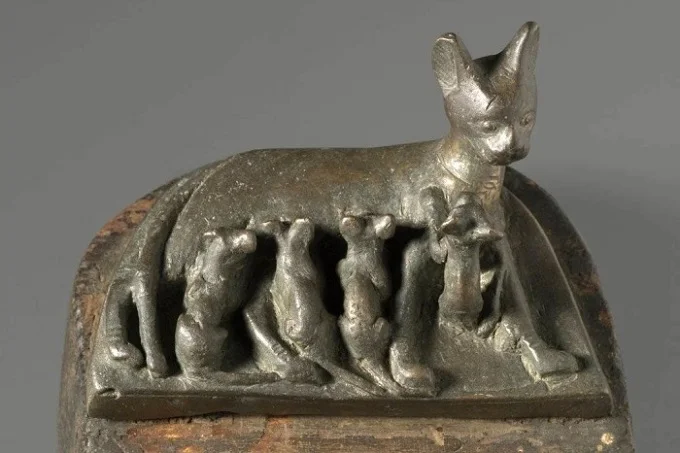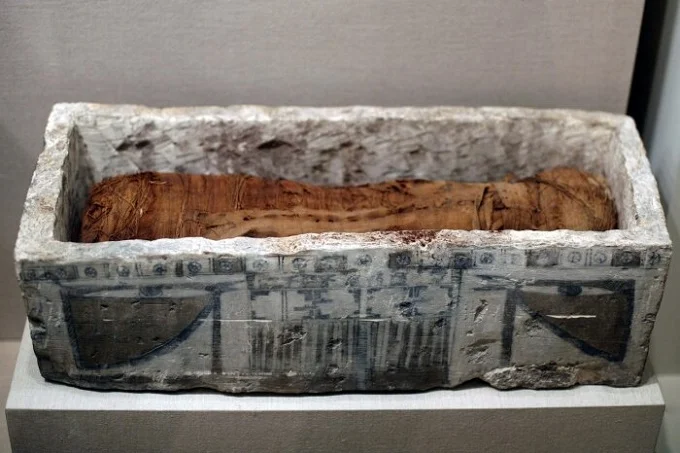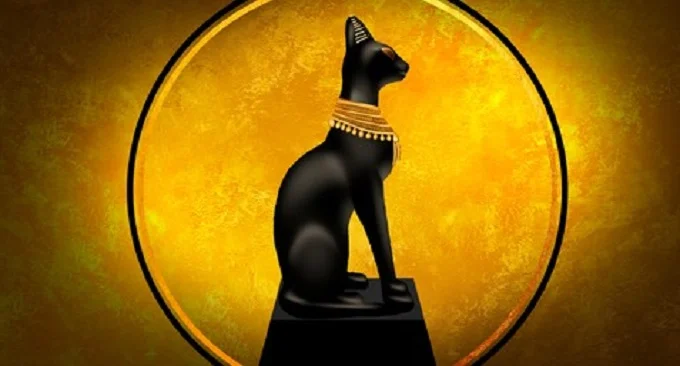How cats were revered in ancient Egypt and why considered divine creatures on soft paws

The special love of the ancient Egyptians for cats is well known. Glorified for its hunting abilities, the graceful cat achieved divine status, becoming an integral part of ancient Egyptian society. Luxurious paintings on the tombs, majestic statues and intricate decorations – all this testifies to the great love of the Egyptians for charming purrs.
In the kingdom of the pharaohs, cats were pampered, respected and protected. However, while the ritual killing of cats was permitted, unauthorized killing was severely punished, and the perpetrator was sentenced to death. For centuries, cats in ancient Egypt retained their high position, recorded in ancient sources in great detail. And only with the advent of Christianity did the purrs lose their prominence.
How cats domesticated in ancient Egypt
While cats achieved high status in ancient Egypt, they were not domesticated in the Nile Valley. Instead, the earliest evidence of cat domestication comes from the Middle East, an area known as the Fertile Crescent. It was here that some of the first human civilizations arose.
The first agricultural revolution turned hunter-gatherers into farmers who abandoned their nomadic lifestyle. This change was accompanied by new technologies and the emergence of the first complex societies as settlements gradually developed into cities and then into kingdoms and empires. Surplus food fueled the development of civilization. However, large granaries and silos that stored valuable food supplies were constantly threatened by a small but persistent enemy – mice, rats and other pests.
During this difficult period, the cat became an integral part of human history. Attracted by rodents, local wild cats made their way to farming villages. Recognizing their value, people began to treat newcomers well, leaving leftover food to encourage them to stay. Gradually, the cat got used to people.
However, the cunning cat has never been fully tamed, unlike the other important pet, the dog. Instead, cats in ancient Egypt domesticated themselves by deciding whether or not to jump into people’s laps.
The earliest evidence that cats and humans lived together in close companionship came from the island of Cyprus, where archaeologists excavated a 9,500-year-old grave of a prehistoric striped cat buried with its master. The cat, however, reached its highest status outside the island’s shores, in the land of the pharaohs, Ancient Egypt.
According to one version, cats arrived aboard ancient trading ships around 2000 BC, but according to another, purrs in ancient Egypt were an offshoot of the local African wild cat, domesticated by local farmers. The life of ancient Egypt depended on the flooding of the Nile, which provided the arable land necessary for the growth of civilization. Cats guarded vital crops against rodents, becoming an object of admiration.
However, purrs didn’t just eat mice and rats. They also killed snakes (many of them venomous) and scorpions to keep people safe. The ancient Egyptians also admired other qualities of cats, such as maternal care for their offspring and their graceful posture. Thus, it is not surprising that the cat’s status only continued to rise over the centuries as the wild cat evolved into a divine creature.
Cats in ancient Egypt
Art offers the best way to trace the cat’s rise to fame in ancient Egypt. One of the first artistic depictions, a fresco found in the tomb of the Egyptian official Baqet III (dated to the 21st century BC), depicts a cat confronting a field mouse, proving the animal’s vital role in preserving the harvest. And from 1450 BC. the cat began to be shown quite often in the scenes of the tombs, especially in Thebes, the capital of Egypt, during the era of the New Kingdom. A famous fresco from the tomb of Nebamun depicts a beautifully painted cat attacking birds and accompanying its owner on the hunt for game. The 3,500-year-old tabby cat is depicted in such detail that it could easily be mistaken for the work of old masters.
By this time, the cat had become a spoiled pet, loved by members of the royal family and noble families. The tomb scenes show this change, moving from outdoor scenes to more intimate, domestic settings. A cat sitting next to or under the owner’s chair is a reminder of the newfound role of the animal. Despite the fact that the cat has become an important part of the household, both in urban and rural settings, ideas about purrs can be interpreted in different ways.

Do not forget that ancient Egyptian paintings also had a symbolic meaning. For example, a cat was often depicted under a woman’s (wife’s) chair, symbolizing fertility and femininity, complementing the long-established motif of dogs sitting or lying under her husband’s chair.
The best evidence for a strong bond between felines and their human is in one of the first recorded feline sarcophagi. The most famous of these pet coffins belonged to a royal pet. Around 1350 BC. Prince Thutmose, eldest son of Pharaoh Amenhotep III, buried his beloved cat in a beautifully decorated limestone sarcophagus.
Ta-Miu (whose name means Catwoman) is depicted like any other venerable deceased nobleman, with a sacrificial table in front of her filled with meat and other offerings. Thutmose did everything he could to provide Ta-Miu with a dignified afterlife.
The scenes from the tombs once again confirm the high status of the cat in noble families, showing them dressed in gold and eating from their owners’ plates. In ancient Egypt, the Egyptians had only one word for cat, the onomatopoeic “miu” or “miit”, which literally means “one who meows”.
Some people have even been named after cats, including the pharaoh Pami, whose name means “Cat” or “one who belongs to a cat (Bastet)”. It is also worth noting the fact that cats in ancient Egypt achieved the status of a privileged pet, their religious role made the purr a central element of ancient Egyptian society.
Divine creatures
The Egyptians considered cats (and other animals) to be vessels that the gods decided to adopt. Cats were respected for being ferocious hunters and protectors of their homes and cubs. At times they could be sweet, and at other times they could be belligerent. All these qualities the cat sha red with its larger cousin, the lion. Thus, it is not surprising that one of the first Egyptian cat deities, Sekhmet – the warrior goddess and protector of the pharaohs (both in life and in the afterlife) wore the head of a lioness.
According to the Egyptian creation myth, Sekhmet was the daughter of the sun god Amon Ra, who sent a goddess with a lion’s head to punish people for their crimes. However, Sekhmet fulfilled her mission with such pleasure that Ra had to calm her vengeful offspring by giving her a red beer that resembled blood. Finally satisfied, Sekhmet curled up and fell asleep, and the enraged lioness turned into a peaceful kitten.
Even though Sekhmet was known as a ferocious deity, she was also a staunch protector of the innocent. However, the most famous Egyptian cat goddess was Bastet (Bast), who had a special connection with cats. She, too, originally had the head of a lioness and was initially associated with Sekhmet.

However, as cats were domesticated and introduced into domestic settings, Bastet acquired a cat’s head, eventually becoming a true cat. An important member of the Egyptian pantheon, Bastet was revered as the goddess of motherhood, fertility, and the home. Just like a mother cat who looks after the safety of her kittens, Bastet was considered the protector of the family. She guarded the household against evil spirits and diseases that afflicted women and children, and was the deity invoked during childbirth. In addition, Bastet played a certain role in the afterlife of man.
The ancient Egyptians wore cat amulets to invoke Bastet’s protection and blessings. Countless sculptures of cats were made in her honor and offered as sacrifices in the hope that the Deity would answer prayers, or they were given as a token of gratitude for answered prayers.
One such statue, the so-called Geyer-Anderson cat, a masterpiece of feline elegance, can be seen today in the British Museum. The cat’s head, adorned with gold earrings and a nose ring, is reminiscent of ancient felines wearing luxurious jewelry made of gold and other precious metals.
Temples dedicated to Bastet were located throughout Egypt and were inhabited by specially trained people who cared for hundreds of cats. The largest of these, the temple of Bubastis (House of Bastet), located in the Nile Delta, was the center of the Bastet cult.
Beginning with the New Kingdom, the popularity of the city of Bubastis grew, turning the temple into one of the most important sacred sites in Egypt. Around 450 BC. Herodotus described this ritual of Bastet, when hundreds of thousands of pilgrims drank copious amounts of wine in honor of the goddess, danced and celebrated in ecstasy. The orgiastic character of the annual festival at Bubastis probably reflected the fertility of the cats and their specific behavior during the mating season. Once again, the ancient Egyptians showed respect to the cat goddess, imitating the sacred felines.
Like every cat, Bastet had her own darker, more violent side. The goddess could quickly turn into a terrifying creature, punishing the offender in the most terrible way. One of the worst ways to offend the goddess was to harm one of her cats.

Unfortunately, one Roman envoy who visited Egypt in 59 BC did not take it seriously. He committed the most terrible crime – he killed a cat. According to Diodorus Siculus, a crowd of angry Egyptians soon gathered, united by a passionate desire to avenge the murdered cat. Even the pharaoh could not save the unfortunate from the death sentence.
Gifts and offerings
While the unauthorized killing of cats was prohibited, thousands of felines were ritually slaughtered in one of Bastet’s many temples. Large nurseries located on the territory of the temple specially bred animals for use as offerings. Sacrificed cats in ancient Egypt were then mummified and buried in nearby cemeteries dedicated to the goddess.
Cat cemeteries have grown to such a level that countless cat mummies were unearthed during excavations in the 19th century. Many of the mummies were carefully wrapped in decorative headdresses. Others were encased in specially made cat statues or decorated sarcophagi, like Thutmose’s beloved Ta-Miu. These finds were so common
Not all cats suffered a cruel fate before their mummification. Purrs in Ancient Egypt could also be buried with their people. According to the Book of the Dead, the owners believed that they would be reunited with their faithful protectors in the afterlife. Others buried their beloved pets in special pet cemeteries, where archaeologists have discovered the remains of well-groomed cats that often died of old age.
Herodotus described the grief caused by the loss of a beloved pet. After a cat died of natural causes, everyone in the household would shave off their eyebrows as a sign of mourning. Another account tells of Egyptians stranded in a burning building, rescuing their cats before escaping themselves or attempting to put out the fire.
Heritage
Ancient Egyptian devotion to the cat was so great that love for them led to their death. In 525 BC. The Persian king Cambyses II attacked Egypt. To capture the fortified city of Pelusium, a key position in the Nile Delta, the astute ruler decided to take advantage of the enemy’s greatest weakness.
The Persians gathered various animals, including cats, in front of their battle line and painted cats on their shields. Fear of harming the sacred animals (and incurring Bastet’s wrath), the Egyptian soldiers put up little resistance, allowing the Persians to capture Pelusium.
This fascinating story is probably just a legend. However, after the victory at Pelusium, the Persians captured all of Egypt. While the Egyptians regained their control a century later, their power continued to decline. Only with the advent of Alexander the Great and the founding of Alexandria did Egypt again become a great power.
The Ptolemies ruled in the same way as the pharaohs of antiquity and continued to follow ancient Egyptian customs. The cult of Bastet reached its height of popularity under the Ptolemies, when Greek settlers joined the locals in worshiping the sacred felines. Even the Romans, who occupied and annexed Egypt in 30 BC, continued to revere miniature lions. Only the arrival of Christianity and its establishment as the main religion throughout the Roman Empire in the fourth century AD brought an end to the ancient tradition. Deprived of their high status, cats in ancient Egypt again became humble pets, protecting people from various pests.

In the following centuries, graceful and cunning felines gradually conquered the whole world, even reaching the barren shores of Antarctica. They then left Earth’s orbit, going into space. With the advent of modern technology and high-speed communications, cats have taken control of the Internet, becoming the protagonists of countless memes, Instagram photos and YouTube videos, thus paying homage to their ancient Egyptian counterparts.




